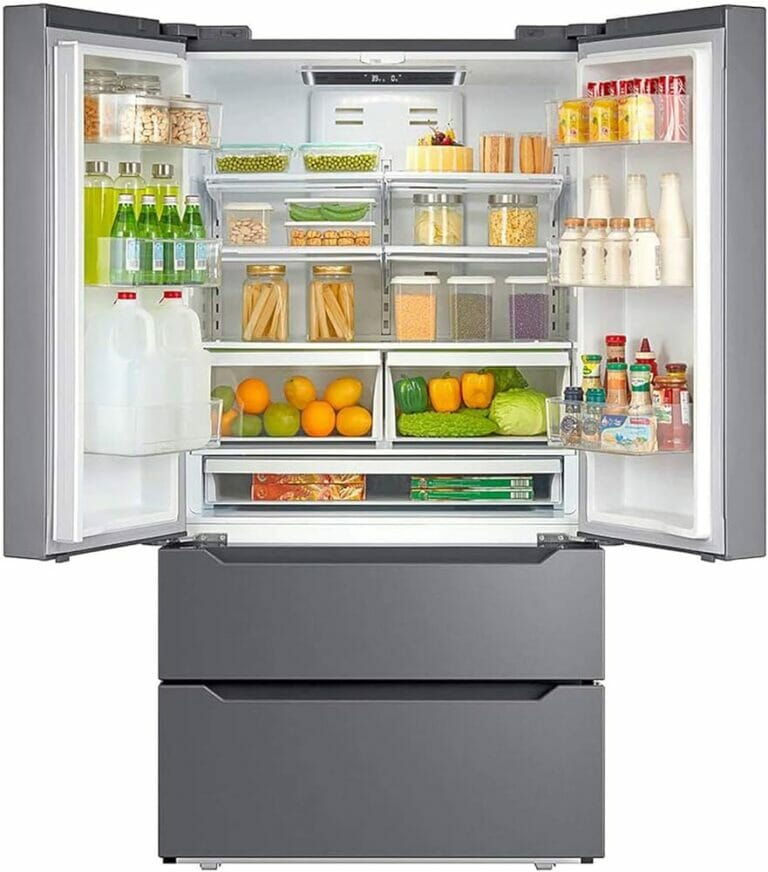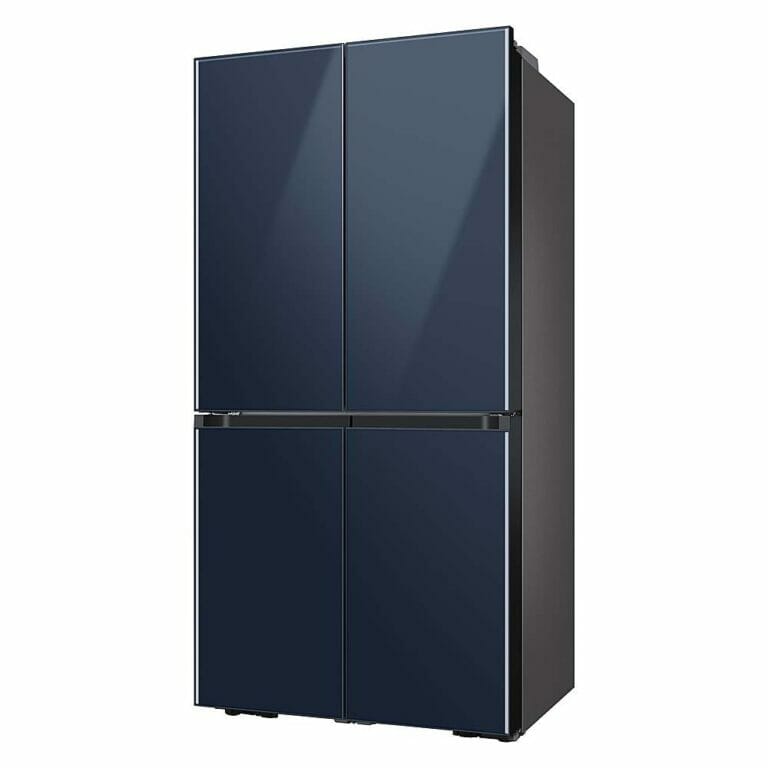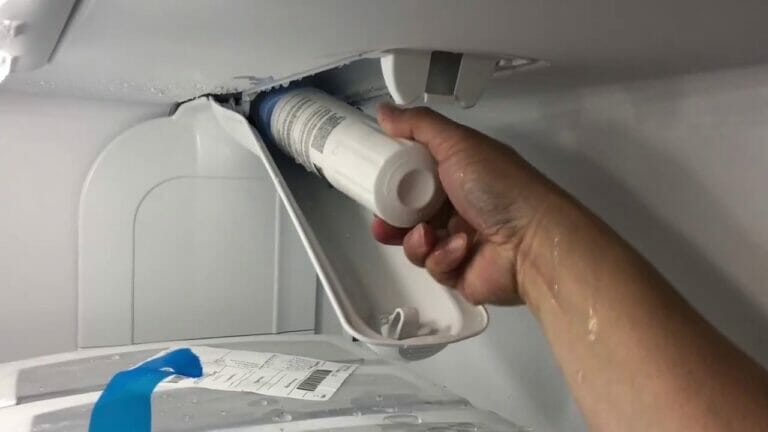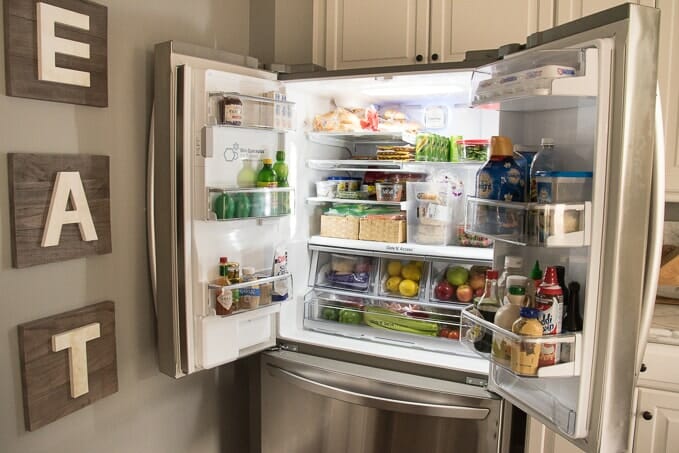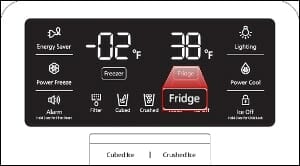
Picture this: you’ve just brought home a shiny new French door fridge, and now you’re wondering, “What’s the ideal temperature for a French door fridge?” Well, my friend, you’ve come to the right place. In this article, we’re going to dive into the world of fridge temperatures and uncover the perfect setting for your French door fridge.
But before we jump right in, let’s take a moment to appreciate the wonder that is a French door fridge. With its sleek design and double doors, this refrigerator not only adds a modern touch to your kitchen but also offers plenty of space to store all your delicious goodies.
Now, let’s get back to the burning question at hand: what’s the ideal temperature for a French door fridge? Stick with me, and I’ll share some valuable insights that will help you keep your food fresher for longer. So without further ado, let’s uncover the secret to perfect fridge temperatures!

What’s the Ideal Temperature for a French Door Fridge?
When it comes to keeping your food fresh and safe, setting the right temperature in your French door fridge is crucial. But what exactly is the ideal temperature for this type of refrigerator? In this article, we’ll explore the optimal temperature range for a French door fridge and why it’s important. From the benefits of proper temperature settings to tips on how to achieve the ideal temperature, we’ve got you covered.
The Science Behind the Ideal Temperature
Maintaining the correct temperature in your French door fridge is vital to preserving the quality and safety of your food. The ideal temperature range for a French door fridge is between 35°F (1.6°C) and 38°F (3.3°C). This range ensures that perishable items like meat, fish, and dairy are kept at a temperature that inhibits bacterial growth while keeping fruits and vegetables fresh.
The Benefits of Proper Temperature Settings
Setting your French door fridge to the ideal temperature offers several benefits:
- Food Safety: By keeping the temperature between 35°F and 38°F, you minimize the risk of bacterial multiplication and foodborne illnesses.
- Extended Shelf Life: The ideal temperature range slows down the spoilage process, allowing your food to stay fresh for longer.
- Preserves Nutrients: Certain vitamins and minerals are sensitive to temperature fluctuations. Refrigerating your food at the correct temperature helps retain its nutritional value.
- Energy Efficiency: Setting your fridge to the right temperature ensures it operates efficiently, reducing energy consumption and keeping your electricity bills in check.
It’s important to note that the temperature in your French door fridge may vary slightly in different sections. The top shelves tend to be colder, while the door shelves are more susceptible to temperature fluctuations. To ensure an even temperature distribution, it’s advisable to rotate the placement of your food items periodically.
How to Achieve the Ideal Temperature
Now that you understand the importance of maintaining the ideal temperature range in your French door fridge, let’s explore some tips to help you achieve and maintain it:
- Use a Thermometer: Invest in a refrigerator thermometer to accurately monitor the temperature inside your fridge.
- Avoid Overloading: Overfilling your fridge can obstruct airflow and prevent it from cooling properly. Ensure there is enough space for air circulation.
- Keep the Door Closed: Opening the fridge frequently allows warm air to enter, compromising the internal temperature. Limit opening the door and be mindful of how long it remains open.
- Check the Seals: Damaged or worn-out seals can lead to air leakage, causing temperature fluctuations. Regularly inspect the seals and replace them if necessary.
- Don’t Store Hot Food: Allow hot food to cool down before placing it in the fridge. This helps maintain a consistent temperature and prevents the surrounding items from warming up.
Common Mistakes to Avoid
While striving for the ideal temperature, it’s essential to steer clear of some common mistakes:
- Freezing Food: Setting the temperature too low can result in frozen food items, impacting their quality and texture.
- Keeping the Fridge Too Warm: Allowing the temperature to rise above the recommended range can accelerate spoilage and bacterial growth.
- Neglecting Regular Cleaning: A dirty fridge can hinder proper cooling and affect temperature control. Regularly clean and declutter your French door fridge.
The Perfect Storage Solution for Freshness
In addition to setting the ideal temperature in your French door fridge, using proper storage techniques can further enhance the freshness and longevity of your food items. Consider these additional tips:
Tip 1: Separating Fruits and Vegetables
Fruits and vegetables have different ripening processes that can affect each other when stored together. Keep them in separate compartments or drawers to prevent premature spoilage.
Tip 2: Understanding the Temperature Zones
French door fridges typically offer different temperature zones within their compartments. Familiarize yourself with these zones and adjust the settings accordingly for different types of food.
Tip 3: Properly Packaging Food
Invest in airtight containers, reusable bags, and wrapping materials to prevent the spread of odors and maintain the freshness of your food. Labeling and dating items can also help you keep track of their expiry dates.
In conclusion, maintaining the ideal temperature in your French door fridge is essential for food safety, extended shelf life, and preserving nutrients. By following the recommended temperature range and implementing proper storage techniques, you can ensure that your food stays fresh and delicious for as long as possible. Remember to regularly monitor and adjust the temperature to achieve the best results. Happy refrigerating!
Key Takeaways: What’s The Ideal Temperature For A French Door Fridge?
- The ideal temperature for a French door fridge is between 35-38 degrees Fahrenheit (2-3 degrees Celsius).
- Keeping the fridge at the right temperature ensures food stays fresh for longer.
- Monitor the fridge temperature regularly using a thermometer.
- Adjust the temperature settings according to the season and the amount of items stored in the fridge.
- Never set the temperature below 32 degrees Fahrenheit (0 degrees Celsius) as it can freeze items and affect their quality.
Frequently Asked Questions
Here are some commonly asked questions about the ideal temperature for a French door fridge:
1. What should be the temperature setting for a French door fridge?
For a French door fridge, the ideal temperature setting is between 35°F and 38°F (1.7°C and 3.3°C) for the refrigerator compartment. This range ensures that perishable foods, such as fruits, vegetables, meat, and dairy products, stay fresh for longer. It also helps prevent the growth of bacteria that can cause foodborne illnesses.
When it comes to the freezer compartment, the recommended temperature is 0°F (-18°C). This temperature ensures that frozen food stays solidly frozen, preventing freezer burn and maintaining food quality. Remember to use a thermometer to monitor the temperature and adjust the settings accordingly.
2. Are there any specific temperature zones in a French door fridge?
Yes, a French door fridge typically has different temperature zones within the refrigerator compartment. The upper shelves are generally cooler, making them ideal for storing items that require colder temperatures, such as dairy products and beverages. The lower shelves, closer to the crisper drawers, tend to be slightly warmer and are perfect for storing fruits and vegetables.
Additionally, French door fridges often come equipped with a dedicated deli drawer with adjustable temperature settings. This drawer is designed for storing deli meats, cheeses, and other perishable items that require a slightly higher temperature than the rest of the refrigerator compartment.
3. Why is it important to maintain the ideal temperature in a French door fridge?
Maintaining the ideal temperature in a French door fridge is crucial for food safety and preservation. Temperatures that are too high can lead to bacterial growth, spoiling food and increasing the risk of foodborne illnesses. On the other hand, extremely low temperatures can affect the texture, flavor, and quality of certain foods, leading to freezer burn or a loss of freshness.
By keeping the fridge at the recommended temperature range, you ensure that your food stays fresh for longer, reduces waste, and helps you make the most out of your groceries. It also helps maintain the energy efficiency of the fridge, as operating at the correct temperature range optimizes electricity usage.
4. How can I check if the temperature in my French door fridge is accurate?
To check if the temperature in your French door fridge is accurate, you can use a refrigerator thermometer. Place the thermometer in a glass of water and leave it in the middle of the fridge for 24 hours. After that period, check the temperature reading on the thermometer to see if it falls within the recommended range.
If the temperature is not accurate, consult your fridge’s user manual or contact the manufacturer for instructions on how to calibrate the temperature settings. It’s important to also make sure that the fridge is not overpacked, as overcrowding can obstruct airflow and impact temperature distribution.
5. Are there any external factors that can affect the temperature in a French door fridge?
Yes, there are external factors that can affect the temperature in a French door fridge. The fridge’s location plays a role; if it is placed near a heat source like an oven or in direct sunlight, it may struggle to maintain the desired temperature. It’s best to position the fridge in a cool, well-ventilated area with proper clearance around it.
Opening the fridge frequently and for extended periods can also affect the temperature inside. Each time you open the door, cold air escapes, and warm air enters. To maintain the ideal temperature, try to keep the frequency and duration of door openings to a minimum. Lastly, if the fridge’s door seals are damaged or worn out, they can cause temperature fluctuations. Check the seals regularly and replace them if necessary.
Summary
So, what’s the ideal temperature for a French door fridge? Here’s what you need to know. Firstly, the refrigerator compartment should be set between 37 and 40 degrees Fahrenheit to keep your food fresh and safe. Secondly, the freezer compartment should be set at 0 degrees Fahrenheit to keep your frozen items solid and ready to eat. Remember, these temperatures can vary depending on personal preference and the type of food you store, but these ranges are a good starting point for optimal food storage.

